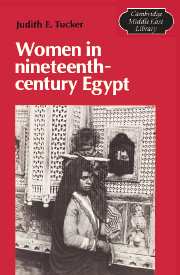Book contents
- Frontmatter
- Contents
- List of illustrations
- Acknowledgments
- List of abbreviations
- Note on transliteration and dates
- Introduction
- 1 Ploughs and shares: women, agricultural production, and property
- 2 Spindles and songs: women in urban occupations
- 3 Private and public life: women and the growth of the State
- 4 Women, resistance, and repression
- 5 The practice of slavery: women as property
- Conclusion
- Appendix: The court records, overview and sample
- Notes
- Glossary
- Bibliography
- Index
4 - Women, resistance, and repression
Published online by Cambridge University Press: 28 October 2009
- Frontmatter
- Contents
- List of illustrations
- Acknowledgments
- List of abbreviations
- Note on transliteration and dates
- Introduction
- 1 Ploughs and shares: women, agricultural production, and property
- 2 Spindles and songs: women in urban occupations
- 3 Private and public life: women and the growth of the State
- 4 Women, resistance, and repression
- 5 The practice of slavery: women as property
- Conclusion
- Appendix: The court records, overview and sample
- Notes
- Glossary
- Bibliography
- Index
Summary
Life is like a ghāziyah: she dances just briefly for each.
Egyptian proverb (Taymūr, 1244, p. 214)She went forth to avenge her father but returned pregnant.
Egyptian proverb (Taymūr, 1281, p. 220)The growth of the state apparatus in the nineteenth century, which encouraged and enabled the government to intervene on a modest scale in social institutions, also expanded the repressive means wielded by the State and its officials. Control of the population had long been a central concern of the prior Mamluke government: tranquil conditions were a prerequisite for the collection of tax revenues in the countryside. The aspirations of the developing absolutist State under MuḤammad ‘Alī, however, went beyond the mere preservation of public order to encompass the direct exploitation of its subjects in agricultural and industrial labor, as well as military service. Much heavier corvée demands, and the introduction of drafts for soldiers and laborers in state industry, invariably raised the level of state intervention in the countryside and prompted greater recourse to coercion as popular resistance grew. Government officials, present in greater numbers and employing heightened powers, formed an integral part of the new order: servants of the State collected taxes, corralled men and women for labor, drafted men for military service, and even issued directives about the cultivation and marketing of crops.
These novel interventions spawned revolt and resistance among Egypt's people. The more dramatic challenges to state power, urban unrest and peasant revolts, were mirrored during more “peaceful” times by countless individual acts of resistance which shaded into common crime.
- Type
- Chapter
- Information
- Women in Nineteenth-Century Egypt , pp. 132 - 163Publisher: Cambridge University PressPrint publication year: 1985



